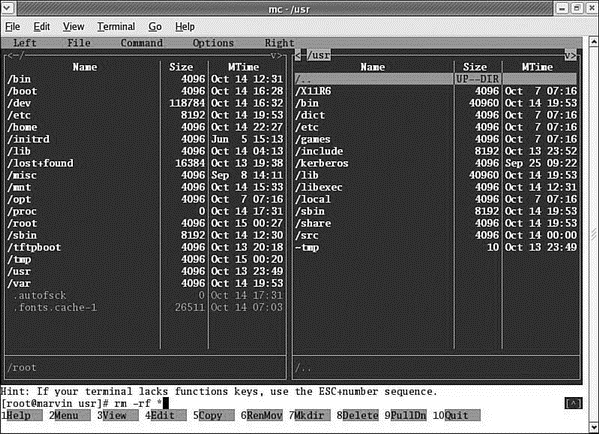Книга: Fedora™ Unleashed, 2008 edition
Using mc to Copy Files
Using mc to Copy Files
The Midnight Commander is a command-line file manager that is useful for copying, moving, and archiving files and directories. The Midnight Commander has a look and feel similar to the Norton Commander of DOS fame. When you execute mc at a shell prompt, a dual-pane view of the files is displayed. It contains drop-down menu choices and function keys to manipulate files. It also uses its own virtual file system, enabling it to mount FTP directories and display the contents of tar files, gzipped tar files (.tar.gz or .tgz), bzip files, DEB files, and RPM files, as well as extract individual files from them. As if that were not enough, mc contains a File Undelete virtual file system for ext2/3 partitions. By using cd to "change directories" to an FTP server's URL, you can transfer files with the FTP protocol. The default font chosen for Fedora makes the display of mc ugly when used in a tty console (as opposed to an xterm), but does not affect its performance.
Figure 13.4 shows the default dual-panel display. Pressing the F9 key drops down the menu, and pressing F1 displays the Help file. A "feature" in the default GNOME terminal intercepts the F10 key used to exit mc, so use F9 instead to access the menu item to quit, or simply click on the menu bar at the bottom with your mouse. The configuration files are well documented, and it would appear easy to extend the functionality of mc for your system if you understand shell scripting and regular expressions. It is an excellent choice for file management on servers not running X.

FIGURE 13.4 The Midnight Commander is a highly versatile file tool. If it does not display properly on your screen, launch it with the -a argument to force ASCII mode.




